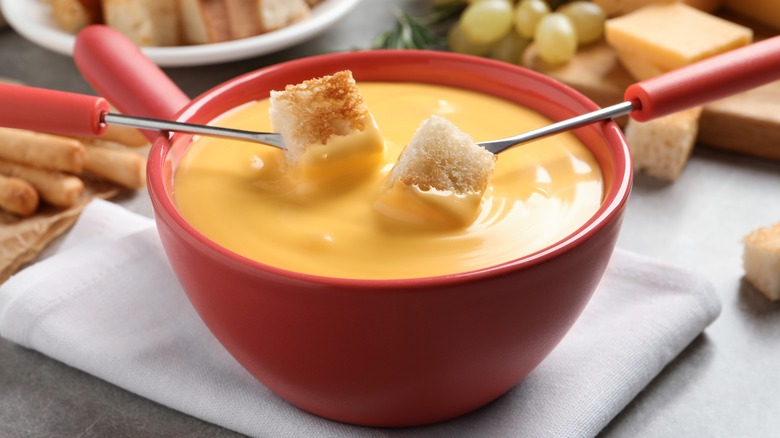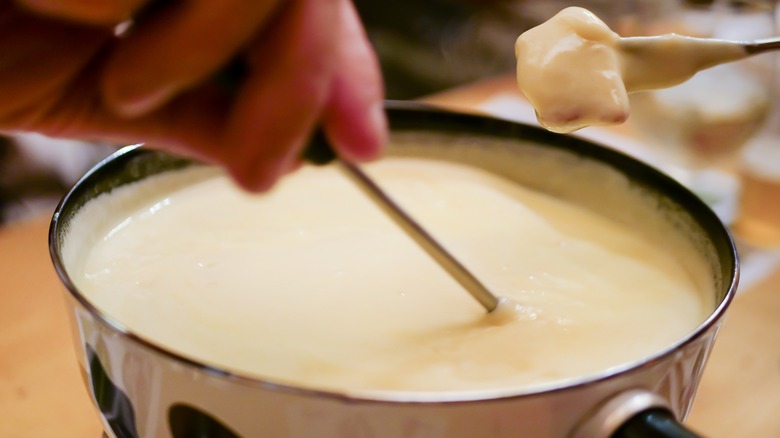What To Do If Your Fondue Starts To Curdle
A quintessential crowd pleaser, cheese fondue knows how to please a group. Whether you swear by cheddar-dipped pretzels or always opt for potatoes, the warm, cheese-based recipe is as much about taste as it is texture. The ideal fondue comes melted and gooey, silky yet thick enough to coat your favorite foods. It certainly doesn't come curdled — though lumps don't always mean it's a lost cause. Rather, there are a few tricks to fix your fondue once it starts to turn.
To revive your fondue, start by lowering the heat of your stove. A change in temperature is among the most basic, but effective, solutions; a low and slow cooking method can help smooth out those pesky lumps and re-incorporate them back into your mixture. If a temperature adjustment isn't quite strong enough, you can also consider adding some additional ingredients. Namely: a form of acid. Specifically, mixing lemon juice (about a teaspoon or two should do the trick) will help return your fondue to its silky, smooth glory.
Alternatively, a dry white wine can likewise achieve some of that acidic power. For the best results, mix wine with cornstarch before you whisk the duo into your fondue. Cornstarch acts as an emulsifier, as well as a thickener, capable of meeting your textural needs. Of course, if you'd rather prevent curdling — rather than respond to it after-the-fact — there's one easy, preventative method.
Cheese fondue curdles when the cooking temperature isn't quite right
Because the magic of cheese fondue happens over heat, the trick is in the temperature. Your instinct may be to crank up the heat (we get it, you're hungry!), but doing so can prove detrimental to your fondue. Cheese separates when the melting heat is too high, so low and slow is the name of the game. Emmentaler and Gruyère melt at roughly 150 F, so if you go much higher, you'll run the risk of your fondue breaking.
Don't get too carried away, however; cheese can also separate when the melting heat is too low. So, you should be careful not to let your fondue get too cold, or cook at room temperature. You want it warm enough that stirring comes easily.
To resolve this Goldilocks conundrum, settle for a temperature that's just right. Medium heat does the job, though you'll want to keep an eye on the fondue. Adjust the temperature as needed. To ensure an even and consistent melt, likewise slice and dice your cheese so the pieces are similar in size. Stir as you go — though, if all else fails, keep some lemon juice, white wine, and cornstarch on deck.

